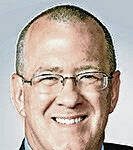Dottie Data called to share her observations about the latest population estimates released recently by the Census Bureau.
“I downloaded every county in the U.S.,” she said excitedly. “Whatcha wanna know?” she asked, imitating a carnival barker.
“First and foremost,” I said, “tell me about Indiana and how we fared in 2021.”
“Indiana,” she intoned, “added 20,341 persons to its number in 2021, for a 0.3% increase that translated to a 21st place ranking among the 50 states.”
“What?” I asked. “Isn’t that a puny percentage increase?”
“No way, pal,” she responded. “The U.S. grew by just 0.12%. If you recall, we still had lots of folks dying from COVID last year. Yet, births did exceed deaths nationwide and in Indiana.”
“But certainly,” I said with certainty, “there were states that had better growth experiences than Indiana.”
“You bet,” Dottie declared. “Idaho, Utah, Montana and Arizona topped all states as people fled to the hills from COVID.”
“Hmm,” I hmmed. “Are those all conservative, Western mountain states growing with folks escaping the contagion of the liberal Pacific coast?”
“That’s a foxy analysis,” Dottie said. “The biggest percentage losers were New York, Illinois and Hawaii. Make up whatever story you like there.”
“And Indiana?” I asked.
“We all know about the growth of the four Indianapolis metro area counties — Boone, Hamilton, Hendricks and Hancock — where growth topped 2%. At the bottom of the list were declining rural counties: Pulaski, Jay, Knox and Pike,” Dottie said.
“However,” Dottie continued, “the interesting stuff is in the details. Indiana had 58 of its 92 counties gaining population, some with more births than deaths, some with more deaths than births, while some counties had more people moving in and some had more people moving out.
“It’s that interplay between natural increase and net migration that drives population change,” she concluded.
“That gets pretty complex,” I said ponderously.
“Bingo, buster,” Dottie confirmed. “The Census estimates that of these 58 counties gaining population, only 11 had an excess of births over deaths (natural increase) and more people moving in than moving out (positive net migration).”
“You’re telling me 81 Hoosier counties had negative natural increase or negative net migration, or both?” I said. “That’s painful.”
“Yes,” Dottie answered, “if you think population growth is good. But there are many Hoosiers who will tell you more people is not what their community wants or needs. Remember, many people move to the suburbs or return to small towns and rural areas to enjoy less density.
“They’re not hostile to people,” Dottie said. “They just prefer a different lifestyle from those who find the larger cities desirable. Or they may feel, with today’s technology, more people are damaging to our environment.”
What could I say to that?




